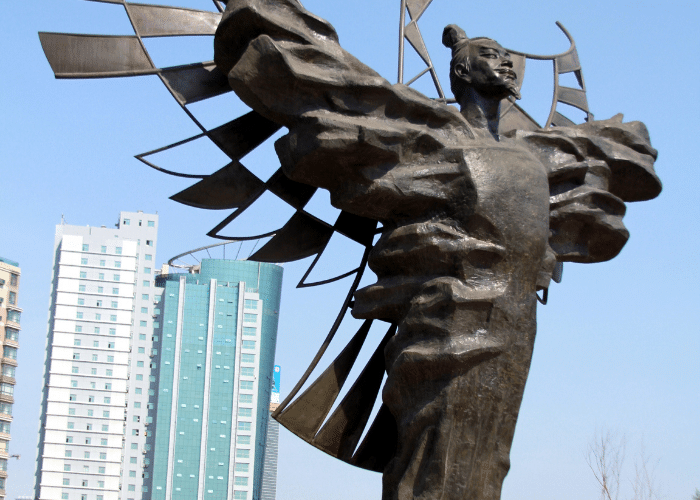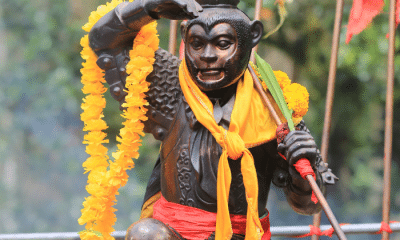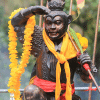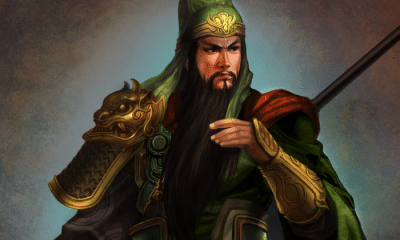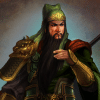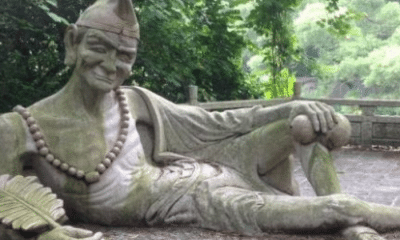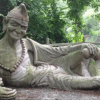Who Was Lu Ban in Chinese Religion?
Lu Ban is the Chinese patron of craftsmen, builders, and engineers. Is there any truth to the tales of his famous inventions, though?
Chinese deities are often said to have been living people who were deified for their actions in life. Great heroism, virtue, or wisdom could lead to a person being revered as a god by later generations.
Many of these gods date back to early Chinese history, when the culture’s foundations were laid. They are credited with the creation of the technologies, social structures, and philosophies that would impact life in Asia for thousands of years.
One such figure is Lu Ban, the patron god of builders and craftsmen. Records give exact dates for his lifetime, but he is revered as a god by many.
Lu Ban’s position as a deity can be directly linked to the time in which he lived. A period of rapid transformation in both technology and thought, it produced the many inventions that would make Lu Ban famous.
Lu Ban the Inventor
According to legend, Lu Ban was born with the name Gongshu Yizhi into a family of carpenters or artisans. He lived from 507 – 444 BC during the late Zhou Dynasty.
In his youth, Lu Ban had little interest in scholarship. This changed, however, when he studied under Zi Xia, also known as Bu Shang.
Bu Shang was a disciple of Confucius, who was born only a few decades before Lu Ban. Hearing the new teachings of the sage, Lu Ban began to pay attention Bu Shang’s idea of favoring talent over family connections or status.
Lu Ban, as the son of artisans, soon began to display talents of his own. He used the woodworking he learned from his parents as the basis for new inventions and techniques.
Lu Ban’s work was in such high demand that he had to reinvent some of the traditional tools of carpentry. He reworked tools such as the shovel, the planer, the square, and the drill to be more efficient.
His wife helped him to become more efficient. She invented the umbrella so he could work in inclement weather and not have to stop when it was raining.
According to one legend, Lu Ban did not make the saw more efficient. Instead, he invented it himself.
This legend says that Lu Ban was once grabbing onto branches to climb a steep slope while collecting wood. When his hand was cut by a serrated leaf, he realized that he could use the same texture to cut through wood more efficiently.
While Lu Ban made many improvements to basic technology, his most well-known inventions were far more ambitious.
The Cloud Ladder was a mobile device used in siege warfare. It was counterweighted to make it more stable, allowing armies to scale fortifications more surely than standard ladders but with greater ease than bulky siege towers.
For naval warfare, Lu Ban invented the grappling hook and the ram. While they had valuable uses on land, they were widely used to board or sink enemy ships.
Legend has it that Lu Ban also designed the first kite, which he called a Wooden Bird. Unlike actual kites, however, this device could stay in the air for three days under its own power.
Some said that Lu Ban created the first wooden carriage and devised the way by which coachmen might control its horses. He was also said to have invented a lifting device that was specifically used to make burials easier.
Lu Ban was even credited with creating the world’s first pedal-powered cycle. While it bears little resemblance to a modern bike, prototypes have shown that the machine described in historical texts may have been functional.
Lu Ban’s inventions were so numerous and marvelous that he came to be regarded as the greatest master craftsman in the kingdom. Soon after his death, he was deified.
Unsurprisingly, Lu Ban became the patron deity of craftsmen and builders. Along with Wang Er, the stonemason who lived at the same time, he is invoked by construction laborers and master engineers alike.
My Modern Interpretation
Lu Ban’s life is dated to a specific and transformative era in Chinese history. The Spring and Autumn Period of the Zhou Dynasty is one that blends historical records and fantastic legends.
By the end of the 6th century BC, power in China was largely decentralized. The Zhou Dynasty had little control over the individual states within its borders.
Much of the 5th century BC, the latter half of Lu Ban’s life, is referred to by historians as the Warring States Period. With so little control coming from the Zhou court, the smaller states were almost constantly at war with one another.
At the same time, the Spring and Autumn and the Warring States Periods were also times of rapid transformation in Chinese culture and technology.
Confucius’s teachings began in the 6th century BC and spread rapidly throughout the kingdom. The philosophy placed emphasis on studying and learning, creating an environment in which scholarship was valued in all areas of life.
Bu Shang, who was said to have tutored Lu Ban, particularly emphasized this ideal. He was said to treat learning almost as an end onto itself and taught that the talent derived from study was more important than nobility or legacy.
The story of Lu Ban’s tutelage is almost certainly apocryphal since he and Bu Shang were said to be the same age. It shows, however, that he was part of a pioneering generation that used study to advance rather than pre-existing social standing.
While philosophy underwent a transformation during the Zhou dynasty, it was also a period of great instability. The Warring States Period was one of violence and upheaval, but it also spurred its own types of innovations.
During this era, iron replaced bronze as the metal used in weapons and tools. While the use of iron has been recorded long before the Warring States Period, conflict spread its importance and made it the dominant technology throughout the region.
Technology advanced outside of war, as well. Although the individual states were often at war, the local consolidation of government power also meant that civil projects were completed more quickly than they could be under a centralized government. Levees, irrigation, and building projects showcased local power and new techniques.
While warfare is often damaging, the Warring States Period saw local leadership use technology and innovation to display their supremacy. The desire of local governments to prove themselves led to innovations and construction at a rapid pace.
It is unsurprising, therefore, that the patron of craftsmen and builders would have been born in this period.
Many of the specific inventions credited to Lu Ban are known to have come about, or been greatly improved upon, during his lifetime. The cloud ladder, for example, was later abandoned for its vulnerabilities but at the time was a major technological advance.
It is doubtful that Lu Ban was an entirely historical figure. Even if a great craftsman by that name did exist, many inventions were likely attributed to him that were not originally his creations.
Like the Egyptian architect Imhotep, Lu Ban took on all the inventions and innovations of his era. He may have been a real person, but it is equally likely that he is a representative of all the inventors that thrived in his time.
In Summary
In Chinese culture, Lu Ban is the patron god of craftsmen and builders.
He was said to have been born in the late 6th century BC. Learning from a disciple of Confucius, he embodied the philosophy that talent and study were of great value.
Born into a family of woodworkers, Lu Ban became an innovator and inventor. He improved upon many existing tools and was said to have created new technologies, largely for use in warfare.
Lu Ban’s link to the machines of war is fitting for the era in which he lived. The Warring States Period of the 5th century BC was marked by conflict between the individual states of the weakened Zhou Empire.
Iron became the dominant metal and new inventions were tested in battle. The constant threat of war encouraged innovation and experimentation.
In this environment, new technologies did more than give an advantage in war. They also signalled the power of the local government to complete civic projects.
Lu Ban may have been a historical figure, but the inventions credited to him are likely not the work of a single man. Instead, they represent the innovations of all engineers and inventors of his era.


